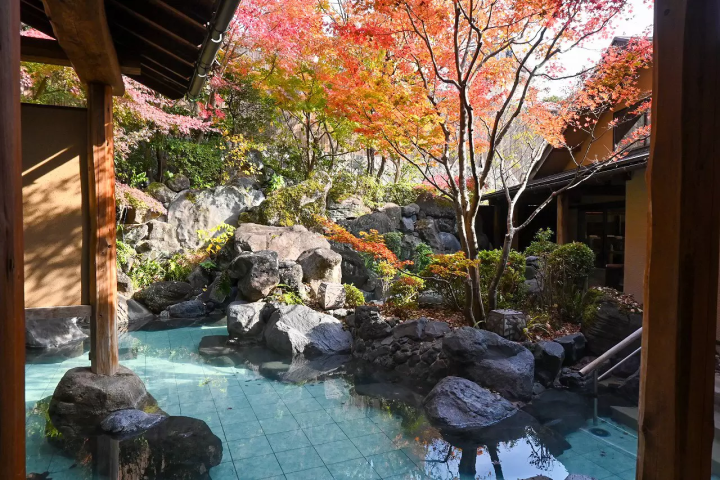Enjoy Chiba's Rural Scenery Aboard A Vintage Train!

For newly arrived visitors to Japan, Chiba prefecture isn't as well known as the Tokyo area, but it certainly has no shortage of interesting places to see. In today's feature we profile three unique train lines in Chiba, all worth checking out.
Upon first arriving in Japan and getting off the plane, many visitors head straight for the downtown areas of Tokyo to do some shopping. But did you know that not far from Narita Airport in Chiba prefecture, there are many charming and appealing points of interest worth visiting?
Today we'll hop aboard three of Chiba prefecture's train lines; the Kominato, Isumi and Choshi Railway Lines, and experience a mood and atmosphere quite different from the bustling metropolis of Tokyo. Let's head over to the train station right now!
Kominato Railway
Access and Location Details

Chiba prefecture's Ichihara city, in the southern portion of the prefecture where the Kominato Railway Line operates, is known as an area with a scenic landscape. In the springtime, many flowers enchant visitors with their beauty, including the rape blossoms in full bloom.
Access is simple and it's possible to get here from Narita Airport within 90 minutes. First take a train to Chiba Station. At Chiba Station transfer to the Uchibo Line and go as far as Goi Station, which is the starting point for the Kominato Railway Line.

Here we recommend purchasing a 1-Day Open Ticket. It costs 1800 yen for adults and 900 yen for children. You can get off and on the train during your trip making it easy to enjoy Chiba's pristine nature, far from the hustle and bustle of the big city.
Train Introduction


The Kominato Railway Line began operations in 1925. Dotting the line's relatively short distance of 39.1 kilometers are 18 stations, making this a compact railroad. Vintage-style cars that utilize electricity are characteristic features that distinguish this line from other ones. The final stop on this line is Kazusa-Nakano Station, which also happens to be the connecting point for the Isumi Railway.
The inside of the car has a charming retro-like feel to it. Many locals use this train and you can often hear the cheerful laughter of students as they get on and off the train along its route. On holidays, visitors and hikers alike can be seen riding the train to their intended destinations.
Recommended Spots Along the Kominato Railway Line


Are you ready to board the train? Our first stop will be Kazusa-Tsurumai Station. Though this station is unattended (no station attendants), there's more to it than meets the eye. For starters, it made the list of the top 100 train stations in the Kanto region, and in addition, it's been the site of numerous TV commercials and dramas. For example, Arashi's (*1) music video and Kazunari Ninomiya's Pocky TV commercial were both filmed here, turning this station into a hotspot for all their loyal fans.
*1 Arashi: A popular Japanese idol group consisting of five male members. Kazunari Ninomiya is one of the band members who's been featured in commercials for Pocky, a Japanese snack consisting of chocolate-covered biscuit sticks.

Though the station nowadays is unattended, the former station attendant's working quarters remain as they were unchanged, accentuating the station's nostalgic feeling.

The next stop is Kazusa-Kubo Station. On weekdays an average of only 20 people per day use this station. However, when the fall season arrives, it attracts many photo enthusiasts hoping to capture the beautiful autumn foliage on film. Standing beside the station at a height of 20 meters is a large ginkgo tree, and when its leaves flutter and sway in the breeze the surrounding area gets carpeted in a sea of yellow.

Takataki Lake is not far from Takataki Station, and during the spring the lakeside is decorated with cherry blossoms in full bloom.

The Ichihara Lakeside Museum , which is also close to the station, has many works of modern day art within its large collection. The museum also regularly hosts a variety of events in which both adults and children alike can have a fun day.

At Itabu Station you'll find a most unusual public toilet. This is the world's largest women's washroom! Designed by architect Sosuke Fujimoto, one glass-enclosed toilet sits alone on a piece of land 200 square meters (2153 square feet) in area. The toilet facility is see-through but comes equipped with a curtain, and as you do your business you can look out at and enjoy the surrounding nature. No other place can offer you such a unique experience!

When you get off the train at Yorokeikoku Station, you're immediately greeted by some cute and adorable felines. Feel free to take a picture if you wish, but please refrain from using the flash as this will startle them.
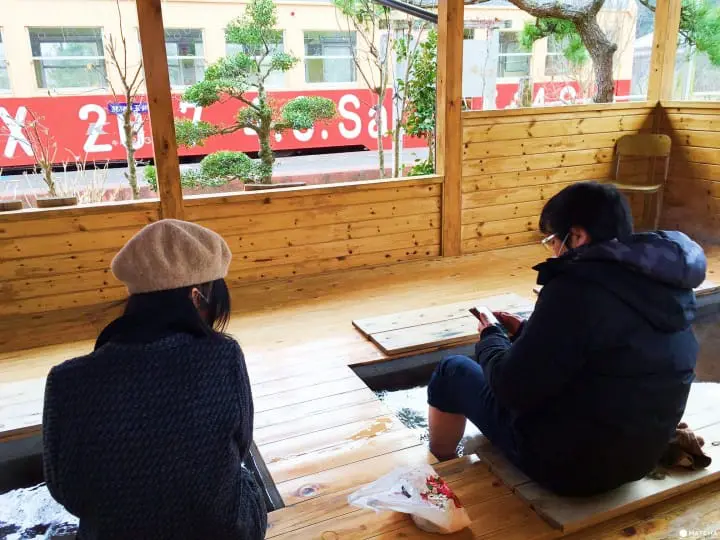
Beside the station there's a complimentary ashiyu, or warm foot bath, which is perfect for those cold winter months or the early part of spring when there's still a chill in the air (reserved only for those with a train ticket or parking ticket stub). From your vantage point in the ashiyu you can see the trains outside coming into and leaving the station, giving you one more fun thing to do while you warm yourself up.
Address
Chiba, Ichihara, Goi Chuo Higashi 1-1-2
WiFi
Not Available
Accepted Credit Cards
Not Available
Access
From Narita Airport, take the JR Narita Line headed for Chiba<br>Station, switch to Uchibo Line, and get off at Goi Station,<br>which is the first station on the Kominato Railway.<br>The train ride takes about 25 minutes from Chiba Station.
Telephone number
+81-436-21-6773
Website
Kominato Railway (Japanese)
Isumi Railway
Access and Location Details

Continuing on from where the Kominato Railway Line leaves off at Kazusa-Nakano Station, the Isumi Railway Line extends all the way to Chiba prefecture's Pacific coastline (the Isumi Railway runs from Ohara Station to Kazusa-Nakano Station).
If you're coming from Narita Airport, then first head to Chiba Station. From Chiba Station hop aboard the Sotobo Line and go to Ohara Station, the starting point for the Isumi Railway Line.
If you decide to ride the train we recommend the 1-Day Open Pass which is 1000 yen for adults and 500 yen for children. Another option is to purchase the Boso Odan Commemorative Pass which costs 1700 yen for adults and 850 yen for children. This pass takes passengers from Ohara Station (Isumi Railway Line) all the way to Goi Station (Kominato Railway Line) allowing everyone to fully enjoy all the sights along this route.
Train Introduction

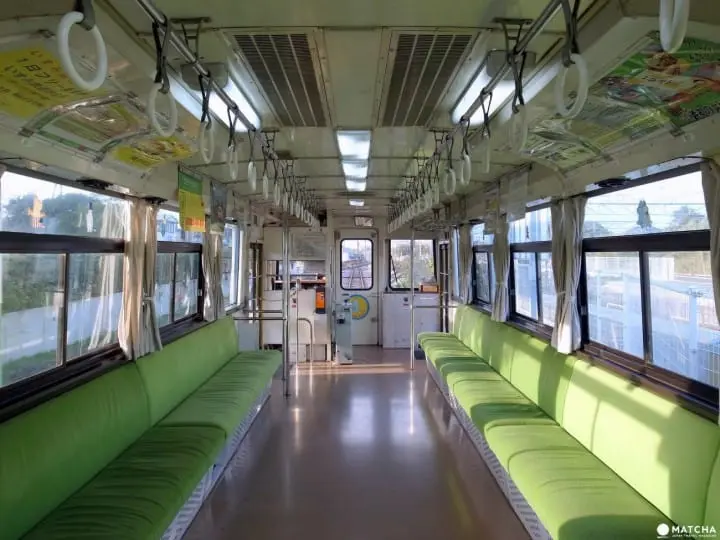
The Isumi Railway Line covers a short distance of only 26.8 kilometers with a total of 14 small stations. But the roadside scenery is exceptionally beautiful, including the paths between the rice paddies that form a charming crisscross pattern. The majority of the passengers on this line visit here for sightseeing purposes.
The cars on this line are essentially divided into two different types. The first type is called a KiHa car. The KiHa cars used on the Isumi Line were built in the 1960's and operated by the former Japanese National Railway Company (JNR), and their retro-like feeling is reminiscent of the Showa period.
The second type of car is one that has adopted the Moomin characters (*2) for its theme, and the outside of the cars are playfully decorated with Moominpappa and the rest of the gang.
The interiors of both types of cars are simple, yet beautiful. It almost feels like you've gone back in time to the past. During the trip, a friendly station attendant politely called out to me and asked, "Were you able to take some good pictures?" "Did you enjoy your trip?" This warm hospitality is not something that you would normally experience when taking other trains.
In addition, the Isumi Railway now has special trains in which sweets, wine and Japanese confectioneries are available on board, such as the sweets and wine train and the Japanese confectionery train. On the day of service, seats are limited so interested parties should contact the railway office directly.
*2...Moomins: The main cartoon characters in a series of books and a comic strip by Finnish illustrator and writer Tove Jansson.
Recommended Spots Along the Isumi Railway Line


Kuniyoshi Station is one of the most popular stations along this route. That's because near the station there are Moomin characters hiding in a grassy plain, making this the perfect spot to take a few pictures.

Otaki Station is the only station on this line that has a station attendant, and the entire surrounding area is known as Boso no Koedo, or Little Edo in the Boso area. It's been attracting a lot of attention recently, having been a film location for the historical drama "Sanada Maru". One reason for its popularity is the fact that Otaki Castle, which appeared in the drama is also located near here.
The castle was built by Tadakatsu Honda, one of four famous military commanders who were often referred to as Tokugawa-Shitenno, or the Four Heavenly Kings of the Tokugawa. If you stand at the Otaki Elementary School gate, off in the distance you can see the castle proudly standing.


Every year during the early part of June, the romantic hydrangea flowers near Koyomatsu Station come into full bloom, and many visitors converge on the area to take photos. Hoping for that ideal picture; one that includes both flowers and train, these photography buffs can be often seen at the station patiently waiting for the incoming cars.
Address
Chiba, Isumi, Ohara
WiFi
Not Available
Accepted Credit Cards
Not Available
Access
From Narita Airport, take the JR Narita Line to Chiba Station,<br>switch to the JR Sotobo Line, and head for Ohara Station, the<br>first station of Isumi Railway. The ride takes around 1 hour and 10 minutes from Chiba Station.
Telephone number
+81-470-82-2161
Website
Isumi Railway (Japanese)
Choshi Electric Railway
Access and Location Details

The Choshi Electric Railway runs through the Hokuso district in the north-east part of Chiba prefecture. In order to ride this train we first have to make our way to Choshi Station. From Narita Airport go as far as Narita Station and then hop aboard the JR Narita line until it gets to Choshi Station. In total this will take about 2 hours.

On this line we also recommend buying a 1-Day Open Ticket that offers unlimited riding privileges. Adults are 700 yen and children are 350 yen. Included in this price are coupons for sightseeing spots along this route, an auspicious good luck charm from a local shrine and nure senbei (moist senbei rice crackers).
Train Introduction


In 1923 the Choshi Electric Railway Company began operating this railway line which is 6.4 kilometers in length and has 10 small stations along its route. Due to declining ridership the company has been faced with financial difficulties, but thanks in part to the support of many people and sales from local products such as nure senbei, it's managing to continue its operations.
Recommended Spots Along the Choshi Electric Railway Line

The first station we arrive at is Kannon Station, and it's worth taking note of the unique station building. The western-style architecture, reminiscent of a building in Switzerland, gives one the illusion of being in Europe. Let's not forget to take a picture of it.
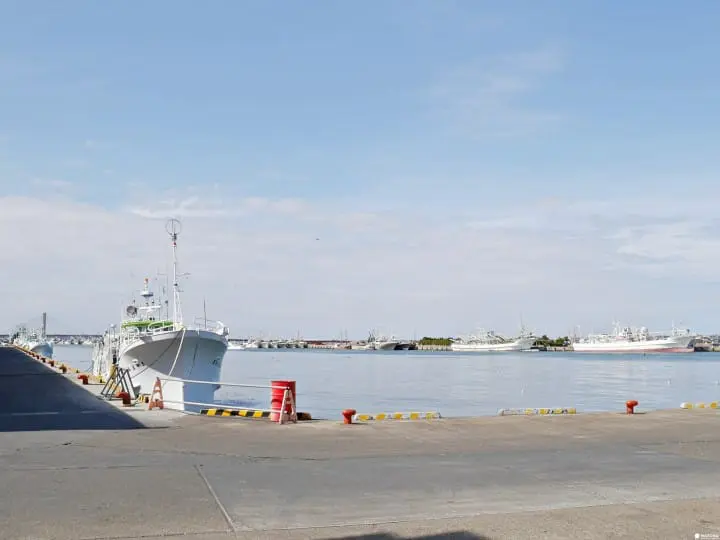
Just 12 minutes on foot from the station is the Choshi fishing port, which on more than one occasion has recorded the largest yearly catch of fish in Japan. Not only can you get a close up view of the fishing port, but you can also sample some of the freshly caught local delicacies such as the kaisendon, which is a bowl of rice topped with seafood.

Next we continue on to Inubo Station. Here we can see Inubosaki lighthouse which is ranked on the list of the world's top 100 lighthouses. It was designed by a British architect and constructed with bricks more than 100 years ago. Even today the lighthouse continues to stand magnificently as it watches over the passing ships. Admission is 200 yen.
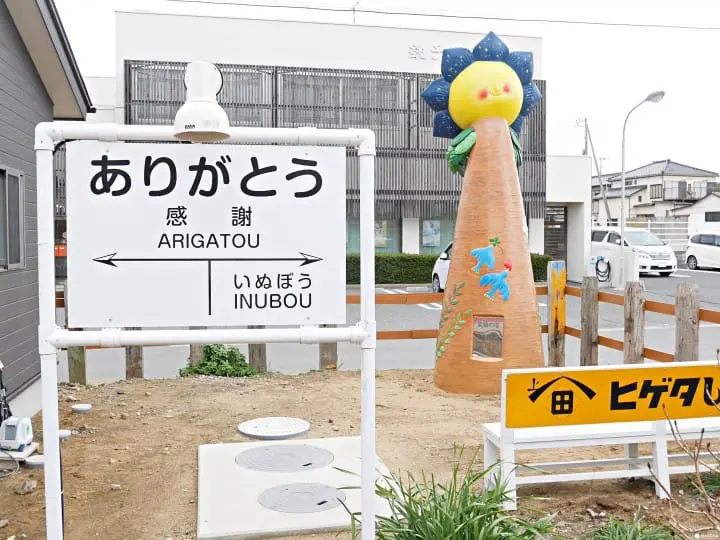
The final stop is Tokawa Station, also affectionately known as 'Arigato' Station. This Japanese word is used to express appreciation and gratitude.

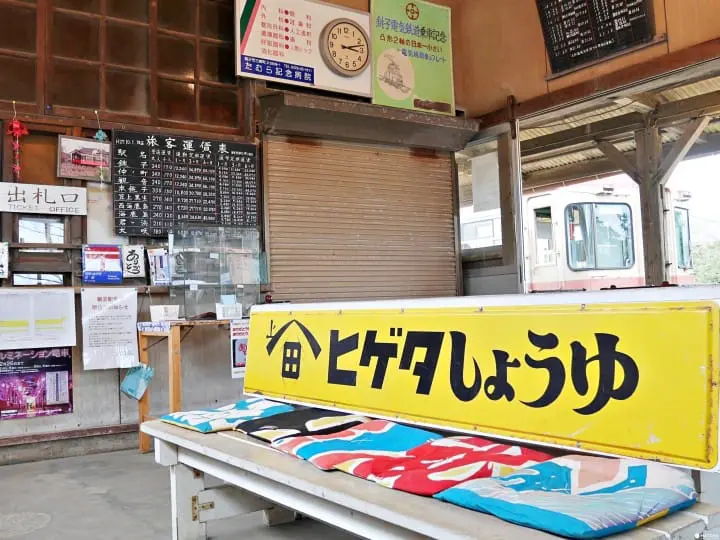
Inside the Tokawa Station building there's a long wooden bench decorated with seat cushions that were made by local citizens, and the bulletin board on the wall has announcements and other community information, making the station an important focal point for those living in the surrounding area.

Also nearby is the Showa Nostalgia Museum, operated by the Keiyo Towa Pharmaceutical Company. Still sitting on the railway tracks, this train-turned-museum is filled with countless artifacts and attractive daily life items from the Showa period, leaving visitors with a nostalgic feeling. Admission is 150 yen.
In Closing
So those were the three train lines in today's article. Which railway line did you like the most?
On your next visit to Japan, how about venturing out into Chiba prefecture for a change of pace? Here you can see some splendid countryside scenery, sample a variety of tasty treats and experience a heart-warming kind of atmosphere that's simply hard to find anywhere else!
Sponsored by Narita International Airport Promotion Association
MATCHA's promotional account for corporate and local government advertising. We aim to provide useful information to our readers in an enjoyable manner.

































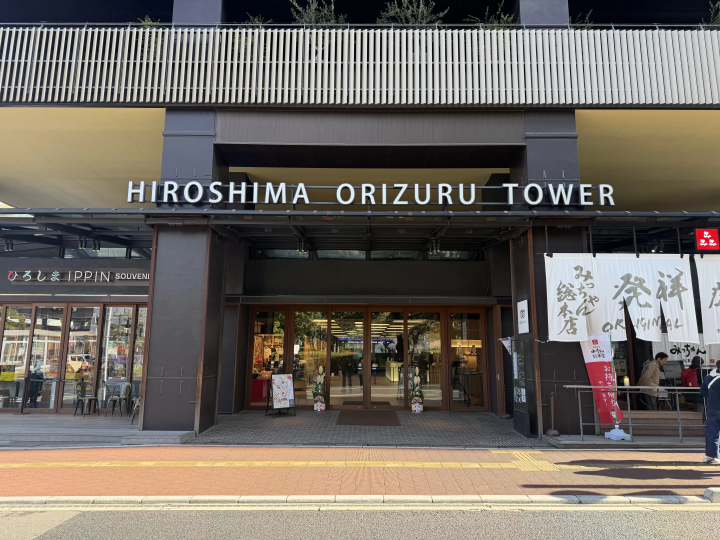
![[Coupons available] We're open even during the New Year holidays! We'll bring you information on our New Year's sale!](https://resources.matcha-jp.com/resize/720x2000/2025/12/26-254137.webp)
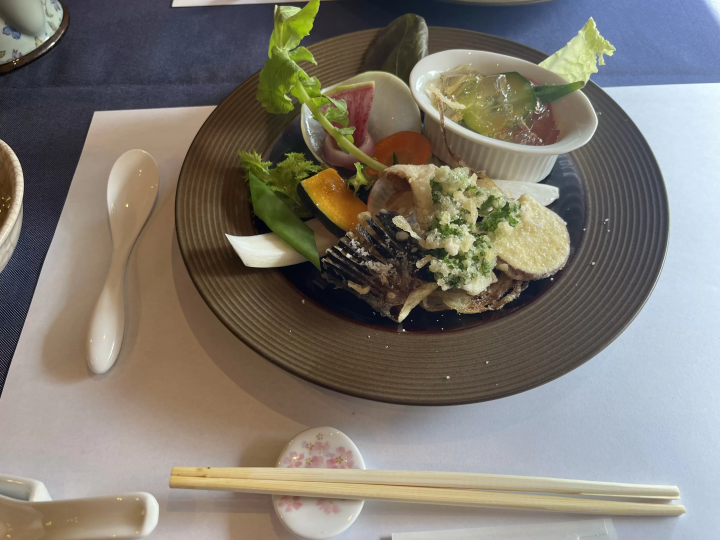
![[For beginners and debutants] Special feature on recommended ski resorts and ski tours!](https://resources.matcha-jp.com/resize/720x2000/2025/12/26-254120.webp)
